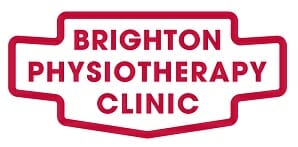Treatment for Poor Muscle Coordination & Ataxia
What is Poor Muscle Coordination?
Poor muscle coordination also known as Ataxia is the lack of muscle coordination which has an effect on walking, picking up objects, speech, movement and other types of voluntary actions. Ataxia can be caused by a variety of factors such as trauma to the head, alcohol abuse, multiple sclerosis, genetics, cerebral palsy, or stroke. Poor muscle coordination can also be a resulting symptom from some types of infections.
Ataxia is the presence of a series of disorders that affect speech, coordination and balance. Ataxia can be hereditary in some people, which is known as genetic ataxia. When it gradually develops over time, It is known as acquired ataxia. It can also occur as a symptom following the presence of other medical conditions in some people. In some cases, poor muscle coordination gets worse over time, while in some other cases it gets better and stabilises. This can depend partly on the cause of it.
Types of ataxia
Ataxias are of various types:
Sensory ataxia
This is caused by loss of proprioception (proprioception senses the positioning of the parts of the body). It detects the effort used by the body to move, and gives feedback on the position of each body part.
Cerebellar ataxia
A dysfunctional cerebellum (the part of the brain that assists in the assimilation of sensory perception, motor control, and coordination) is what causes this type of ataxia.
Vestibular ataxia
This type of ataxia affects the vestibular system. In cases where onset is sudden, vertigo might be a symptom.

What are the symptoms of ataxia?
Poor muscle coordination can develop over time or suddenly. The number of symptoms experienced includes:
- Working in an unsteady manner and the tendency to stumble.
- Difficulty in carrying out basic motor tasks such as Writing, eating, or buttoning a t-shirt.
- Lack of coordination.
- Speech problems.
- Problems when swallowing.
- Nystagmus (involuntary movement of the eye back-and-forth).
Treatment of Poor Muscle Coordination
In many cases, ataxia is not curable, but a lot can be done to ease the symptoms and improve the patient’s quality of life. Treatment for poor muscle coordination employs the use of adaptive devices that help the patient achieve independence as much as possible. Adaptive devices include items such as a wheelchair, a cane, crutches, or a walker.
Targeted physical therapy, speech therapy, counselling, and medications can be used to treat symptoms such as sleep disorders, muscle weakness, stiffness, tremor, or frustration.

Occupational Therapy
This will help the patient learn how to manage the situation better around the workplace or the home. Some home adaptations can also be involved such as wheelchair assessment.
Orthopaedic care
A curvature of the spine can be treated with this method.
Speech Therapy
This will help with symptoms such as swallowing, speech problems, choking, and coughing. Also, if speaking becomes difficult, speech aids can be used.
Counselling
Depression and frustrations that occur when symptoms alter physical mobility and coordination, can be managed with counselling sessions.
Medications
Injections of gamma-globulin can be used to treat ataxia telangiectasia and improve the immune system. Drugs for uncontrollable eye movements and muscle spasms are also available.
Supplements and nutrition
Supplements are administered if there is a vitamin E deficiency. A gluten-free diet may help if there is sensitivity to gluten.
